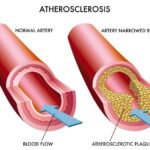Today (8th May) is World Thalassemia Day and we have to learn about it more precisely to prevent thalassemia before it could be disastrous.
According to the World Health Organization, more than 100 million people worldwide carry different types of thalassemia genes. About one lakh children are born every year with complex thalassemia.
According to sources, 6 percent or 12 million people in Bangladesh are carrying different types of thalassemia genes. Six thousand children are born with this disease every year through the intermarriage of these carriers. The number could double in the next 30 years if we don’t catch up now.
World Thalassemia Day is being celebrated on May 8 this year as every year. This year’s theme is Addressing Health Inequalities Across the Global Thalassemia community. If we do Bengali, it stands – we are in the process of eliminating inequality in the treatment of global thalassemia.
At the moment, the treatment of thalassemia is going on somewhere in the world, bonemarrow transplant is going on, gene therapy is also going on somewhere. And somewhere there is only blood circulation. Iron refining medicine also does not match. This time the aim is to identify and prevent such inequality.
Learn about thalassemia and How to prevent Thalassemia
Thalassemia is a hereditary blood disorder. It is a gene-borne disease. It is transmitted from generation to generation through genes.
What happens if you have thalassemia?
We know that our blood contains a type of blood cell called red blood cells. There is a pigment called hemoglobin. The function of this hemoglobin is to supply oxygen to different parts of the body.
Hemoglobin is made up of a combination of two chains, the alpha chain, and the beta chain. Problems with any of these disrupt the production of hemoglobin. Defective hemoglobin is produced. The lifespan of normal red blood cells is 120 days. Defective hemoglobin shortens that lifespan and red blood cells break down easily. In this condition, anemia occurs in the body. And from there various symptoms appear. This is thalassemia.
There are two main types of thalassemia – alpha-thalassemia and beta-thalassemia. The prevalence of beta-thalassemia is higher in the world.
Beta thalassemia can be of two types. A beta-thalassemia minor. These are called thalassemia traits or carriers. The other is Beta-Thalassemia Major.
Thalassemia trait is the main carrier of the disease. In most cases, they do not show signs of thalassemia. Thalassemia major is mainly thalassemia patients.
If both parents are treated for thalassemia, there is a 25 percent chance that the child will develop thalassemia major. There is a 50 percent risk of becoming a career.
The symptoms of thalassemia are mainly anemia. That means fatigue, exhaustion, shortness of breath, pale skin. As the blood breaks down at a higher rate, the skin becomes yellow due to jaundice. Urine may also be yellow. The spleen becomes enlarged. The liver can also become enlarged. The bones tend to become thinner. There are special changes in appearance. The bones of the nose can be given. The shape of the face is a lot like Chinese-Thai or Korean. Which is called ‘Mongoloid Face’.
Body growth is also reduced. Gradually more complications appear.
This patient has to give blood frequently, so the level of iron in the body increases. This iron is stored in the heart, liver and pancreas. This stage is fatal. It can be seen that due to the accumulation of excess iron, the organs start to become crippled. If proper treatment is not given in such a situation, the patient may die. Due to repeated blood transfusions, patients easily develop blood-borne infectious diseases.
In our opinion, blood transfusion is still the main treatment for thalassemia in third-world countries. When iron is increased, it has to be reduced with iron chelation drugs. This is also important. Because if iron can be reduced, thalassemia patients can lead a long and healthy life. But these iron chiles are quite expensive. Most are imported. Only one domestic company has recently started manufacturing drugs of this group. Patients would have survived if such medicines had been distributed free of cost in various government hospitals.
Bone marrow transplantation is a permanent treatment for this disease. But its scope is limited in our country. Bone marrow transplant has been successfully carried out at Dhaka Medical College Hospital for many years. Later CMHO also started this treatment. Among the private hospitals, Evercare Hospital is regularly performing bone marrow transplants. Needless to say, this treatment is expensive and out of reach everywhere.
Thalassemia is a preventable disease. However, widespread public awareness is essential to prevent thalassemia. Thalassemia can be greatly reduced by having a blood test before marriage. It is possible to reduce thalassemia if you can ensure that there is no marriage between the two careers. Marriage between relatives should be discouraged.
In addition, in high-risk cases, the fetus should be tested for thalassemia in a special way after the baby is born. If the disease is caught, abortion can be done on the advice of a doctor. In many countries of the world, the incidence of thalassemia has been reduced in this way.
Extensive public awareness is needed to prevent thalassemia. Thalassemia can be controlled if the government, private, social, media can create this awareness from all sides.



















